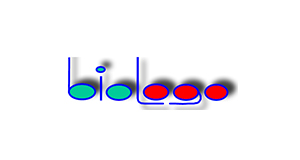Lung carcinoma Cluster 1, N-CAM (MOC-1)
Lung carcinoma Cluster 1, N-CAM (MOC-1), IgG1, Host: Mouse, Monoclonal, Clone: MOC-1
Clone: MOC-1.
Background: The MOC-1 antibody belongs to cluster 1 antibodies which react with neuroendocrine tissue (N-CAM) and in the lung typically detect SCLC and carcinoids. On the VI. International Workshop on Leukocyte Differentiation (Kobe 1996) this antibody has been designed as CD56, which is a known marker for natural killer cells (NK-cells). Lung cancer is a heterogeneous disease which may be characterized by five histopathological criteria. A distinction is drawn between squamous epithelial carcinoma, adenocarcinoma, large cell carcinoma, adenosquamous carcinoma and small cell lung carcinoma (SCLC). The first four in this line are cited as "non-SCLC" in literature. A number of antibodies have been used for the characterization and clustering of lung carcinoma during the 1. International Workshop on Small Cell Lung Cancer Antigens, London 1987. Cluster 1 membrane protein 125 - 145 kDa.
Positive Control: Brain, adrenal medulla.
Immunogen: Preparation of a SCLC-derived cell line.
References: 1. De Leij L., Poppema S., Nulend J. K., Ter Haar A., Schwander E., Ebbens F., Postmus P. E., and The T. H. (1985) Neuroendocrine differentiation antigen on human lung carcinoma and Kulchitski Cells. Cancer Res. 45; 2192-2200. 2. Berendsen H.H., et al. (1988) Detection of small cell lung cancer metastases in bone marrow aspirates using monoclonal antibodies directed against neuroendocrine differentiation antigen. J. Clin. Pathol. 14; 273-276 3. Ruitenbeek T., et al. (1994) Immunocytology of body cavity fluids. Arch. Pathol. Lab. Med. 118; 265-269.
UniProt: P13591.
Caution: *These antibodies are intended for in vitro research use only. They must not be used for clinical diagnostics and not for in vivo experiments in humans or animals. ** The preservative sodium azide is known to be poisonous and potentially hazardous to health. It should be handled only by trained staff. Despite of the product's low azide concentration it must be handled with care. Dispose according to regional rules!
Background: The MOC-1 antibody belongs to cluster 1 antibodies which react with neuroendocrine tissue (N-CAM) and in the lung typically detect SCLC and carcinoids. On the VI. International Workshop on Leukocyte Differentiation (Kobe 1996) this antibody has been designed as CD56, which is a known marker for natural killer cells (NK-cells). Lung cancer is a heterogeneous disease which may be characterized by five histopathological criteria. A distinction is drawn between squamous epithelial carcinoma, adenocarcinoma, large cell carcinoma, adenosquamous carcinoma and small cell lung carcinoma (SCLC). The first four in this line are cited as "non-SCLC" in literature. A number of antibodies have been used for the characterization and clustering of lung carcinoma during the 1. International Workshop on Small Cell Lung Cancer Antigens, London 1987. Cluster 1 membrane protein 125 - 145 kDa.
Positive Control: Brain, adrenal medulla.
Immunogen: Preparation of a SCLC-derived cell line.
References: 1. De Leij L., Poppema S., Nulend J. K., Ter Haar A., Schwander E., Ebbens F., Postmus P. E., and The T. H. (1985) Neuroendocrine differentiation antigen on human lung carcinoma and Kulchitski Cells. Cancer Res. 45; 2192-2200. 2. Berendsen H.H., et al. (1988) Detection of small cell lung cancer metastases in bone marrow aspirates using monoclonal antibodies directed against neuroendocrine differentiation antigen. J. Clin. Pathol. 14; 273-276 3. Ruitenbeek T., et al. (1994) Immunocytology of body cavity fluids. Arch. Pathol. Lab. Med. 118; 265-269.
UniProt: P13591.
Caution: *These antibodies are intended for in vitro research use only. They must not be used for clinical diagnostics and not for in vivo experiments in humans or animals. ** The preservative sodium azide is known to be poisonous and potentially hazardous to health. It should be handled only by trained staff. Despite of the product's low azide concentration it must be handled with care. Dispose according to regional rules!

 Deutsch
Deutsch







